Perfume civilizations have been around perhaps as long as human civilization has. Imagine a magnificent garden filled with fragrant flowers from which the ancients gathered fragrances to appease the spirits. The charm of perfume comes not only from its smell, but also from the container that holds it, and from ancient times to the present, master perfumers have understood that the most delightful scent should be held in the most beautiful perfume bottle.
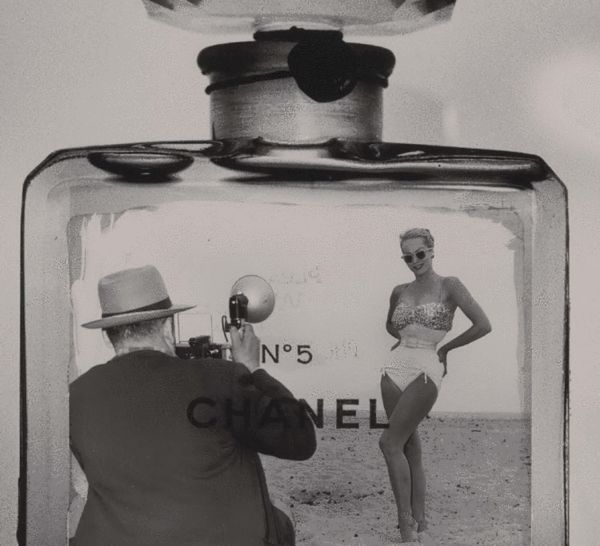
The Evolution of Perfume Bottles
A montage of photographs by American photographer Weegee, who photographed a swimsuit model in a giant Chanel No. 5 perfume bottle in the 1950s.
The Egyptians were the first to use perfume, building perfume houses next to their temples, where myrrh and cinnamon perfumes were served in vats to cover the smell of mummies. The origin of perfume bottles dates back to 1500 B.C., when glassware was still a symbol of power and prestige.
During the Greek and Roman periods, perfume bottles began to be used as objects of personal pleasure. Perfume bottles that could be placed indoors appeared, many in the form of birds, humans and other animals. By 50 B.C., glass blowing had been greatly refined in the Syrian region. Clear glass perfume bottles decorated with colored glass became the treasures of the Roman upper class noblewomen, while metal and enamel containers appeared in the perfume market.
Spanning the 18th century, oriental fragrances in ceramic bottles became the trend, and the fragility of ceramic, which was difficult to transport, made these fragrances invaluable. In the movie "The Greatest Showman", Queen Marie Antoinette was fascinated by oriental ceramics, leading the way for the aristocracy.
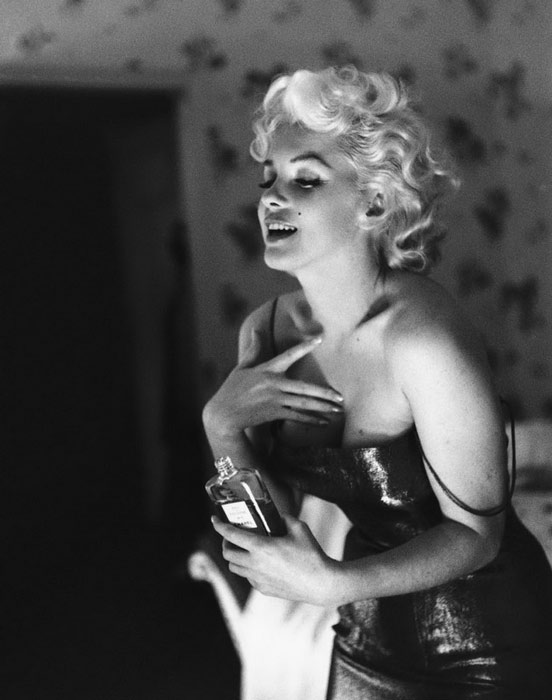
Marilyn Monroe Wearing Chanel No.5 Perfume
Of all materials, glass is the most suitable for perfume, it does not have any chemical interaction with the liquid that can cause the fragrance to change, and its cap is more dense, which helps to lock in the smell. Perfume and glass bottles became a regular feature on women's dressing tables until the late 19th century. In the 20th century, perfume bottle design accelerated the frequency of trend changes.
The Art Nouveau movement reached its peak in the first decade of the 20th century, when perfume bottle designs were full of whimsy. The most commonly used form was the flower. The Floramye perfume designed by L.T Piver in 1905, for example, has a crystal stopper and a purple iris orchid decorated with gold floral lettering, which is beautifully sculpted. Perfume bottles of this period often used cork, storing the perfume like wine.
In 1907, the spray bottle was born, with a balloon attached to the outside of the bottle, and the perfume liquid was sprayed out atomically by pressing and squeezing the balloon. A spray perfume called De Vilbis was very popular at the time, with the smooth shape of a wine glass and a few clear glass flowers "blooming" at the top, with a thin spike falling at the end of the balloon. This design seems a bit outdated and cumbersome nowadays, but it was a perfect fit for the "feminine" reverie of the time.
In the 1920s, World War I caused the decline of the beauty industry in Europe, and the United States became a major perfume manufacturer. The new perfume bottle design reflected the splendid beauty of Hollywood-style extravagance. Miracle by Lentheric, Atakor by A. Euziere, and three perfumes from Jean Patou, Le Sien, Amour-Amour, and Que Sais-Je, are representative of this period.
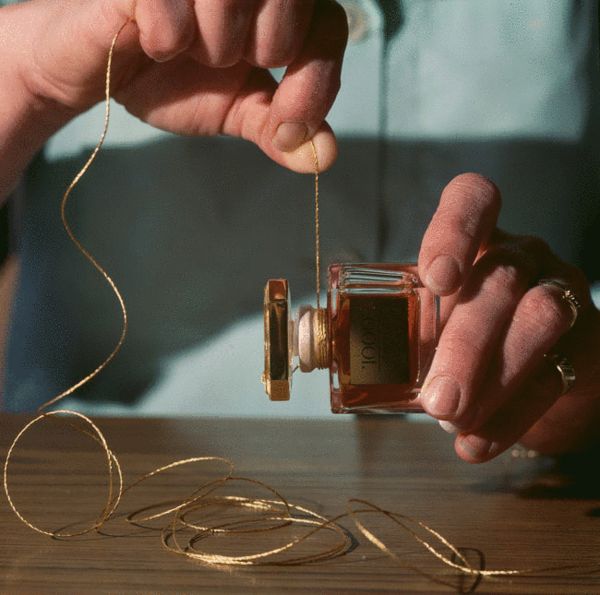
In 1992, Jean Patou launched "1000", a perfume with a gold thread wrapped around the bottle
The most successful perfume of the 1920s was the famous Chanel No. 5, which was housed in a simple square bottle with a simple paper label and glass spout, a linear design that reflected Coco Chanel's uncompromising character and minimalist, modern design.
The onset of the Great Depression caused sales of perfume to plummet. This caused many over-designed perfume bottles to disappear from the market. Some perfume brands simplified their bottles, opting to put more thought into the paper outer packaging. The renaissance of perfume bottles again did not come until the late 1940s, at the end of World War II. This time, the glass blowing process went to the grave, and the variety of perfume bottle designs reflected the quest for individuality, with materials such as metal and plastic, hand-painted and enameled decorations starting to emerge. For example, Germaine Lecomte's perfume Soir de Fête, the bottle combines materials such as glass, plastic, thread and metal, and is lined with pink poplin, reflecting a decadent beauty that is consumable by the masses.
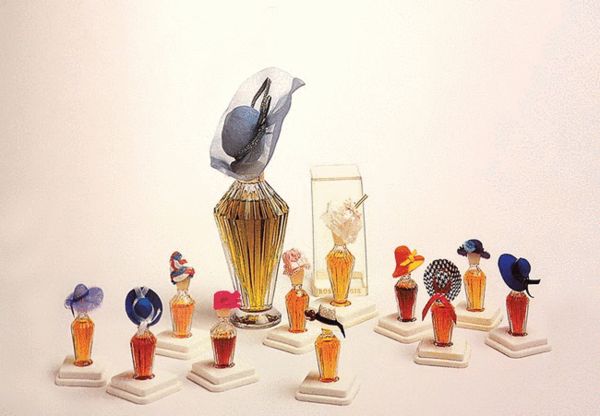
Marotte miniature perfume designed by hat designer Rose Vallos in the 1950s
The design of perfume bottles in the 1950s was influenced by the roaring modern art movement. Perfume makers became the sponsors of Expressionist and Surrealist artists. Artist Salvador Dali designed the Elsa Schiaparelli and Marquay perfume bottles. For one of Marquay's perfume bottles, "Rock'N Roll," he used an abstract black and red pattern that was very conceptual. For the Le Roy Soleil bottle designed for his friend Charbolais, Dalí used golden sunsets and birds in his own visual refinement.
During this period, artists and designers began to show the first signs of cross-border collaboration, for example, hat designer Rose Valois (Rose Valois) designed a series of miniature perfume bottles, called Marotte, each one is like an abstract tiny person, wearing a different female hat.
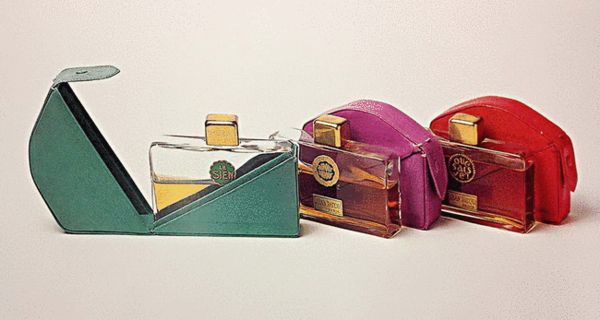
Jean Patou's three fragrances, Le Sien, Amour-Amour and Que Sais-Je, are representative of the 1920s.
In the swinging 1960s, the preference for perfume bottles was for sleek lines and bright colors. A decade later, the image of an independent and powerful woman was sought after. Then, strong musks won a place in the fragrance world. Houbigant's musk, for example, saw heavy metal and medium sexiness as themes in the bottle design. In the 1980s, the invention of the built-in sprayer made perfume a truly portable cosmetic, and the mass application of plastic led to a broader consumer base. It was during this period that Dior's Poison stood out from the rest. The perfume hit the shelves in 1985 with the look of a dark plum colored round apothecary bottle with a crystal stopper, gold lettering and glittering details, the glitz and glamour never ends.
The design of the perfume bottle also followed the trend of minimalist style in the 1990s. As the outsourcing industry developed, the production of perfume bottles moved to developing countries. The rise of designer fashion brands led to the popularity of designer perfumes. The most classic is Calvin Klein's series of perfumes, the bottle resembles a small bottle of wine ready to be opened and drunk; or Issey Miyake's "Water of a Lifetime", with spring water lilies and oriental floral fragrances to spread Zen, the bottle is ethereal and slender tower shape.
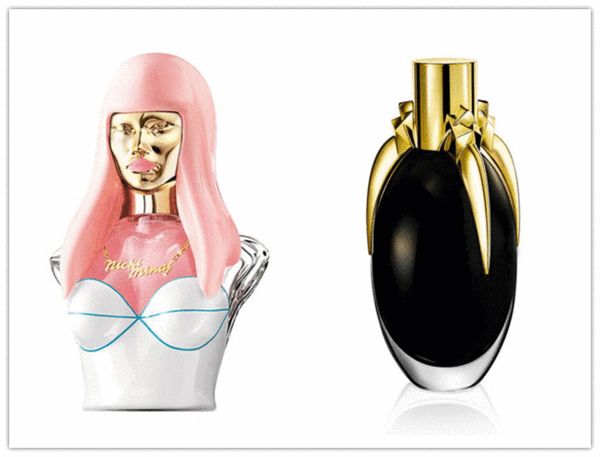
Actress Nicki Minaj (pictured left) and Lady Gaga's personal fragrance
There are so many different perfume bottles coming out after the 21st century that it's hard to find commonalities. But one thing is indisputable: perfume is increasingly becoming a "cash cow" category for brands, and more and more people want a piece of the action. The difficulty factor is too high for celebrities to learn fashion design halfway, so it is better to design an eye-catching perfume. Among them, Lady Gaga's Fame is one of the best: a black oval bottle with a gold beetle-shaped cap. There's also Pink Friday by hip-hop singer Nicki Minaj - the bottle looks exactly like her.
Related tags: